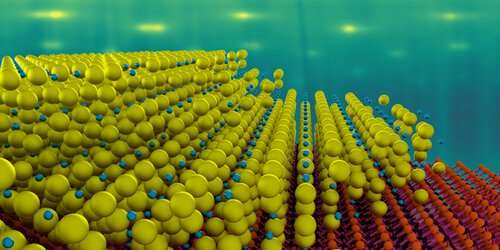March 31, 2022 report
Ultrathin films of cesium antimonide used to make more efficient photocathodes

A team of researchers at Cornell has developed an ultrathin film of cesium antimonide that can be used as a highly efficient photocathode. In their paper published in the journal Physical Review Letters, the group describes their approach to creating the photocathode and how it performed when compared to conventional photocathodes.
A photocathode is a device that converts photons into electrons via the photoelectric effect. In practice, such devices are made of a material that releases an electron when struck by a photon. When large numbers of electrons are produced, they can be gathered into a beam for use in applications such as free-electron lasers and electron diffraction. As the technology has matured, scientists have continued to search for ways to increase the efficiency of such devices (a measure of the number of electrons that are released compared to the number of photons that strike the photocathode). In this new effort, the researchers developed a new kind of photocathode using antimony and cesium.
The team applied a form of epitaxy, antimony and cesium that had undergone an extremely thorough filtering process and sublimated inside of a vacuum chamber where they condensed onto a silicon carbide substrate. The action occurred one atomic layer at a time with the atomic structure of the material that was created in the same orientation as the substrate, ensuring that it was free of defects. The ultrathin films that resulted were just 4 nm thick and could be used as a photocathode.
The team then set about analyzing the film (using various kinds of spectroscopy and electron diffraction) to ensure that it was, indeed, defect-free and that the layers had been deposited on the substrate in the manner intended. Satisfied with their results, they began testing the film to see how it compared with conventional films.
They found that when converting green light into electrons, the efficiency of their photocathode was greater than 2% and its process was as short as 10 fs, significantly faster than conventional photocathodes. They conclude that similar photocathodes could be used to create new devices with significant brightness enhancements.
More information: C. T. Parzyck et al, Single-Crystal Alkali Antimonide Photocathodes: High Efficiency in the Ultrathin Limit, Physical Review Letters (2022). DOI: 10.1103/PhysRevLett.128.114801
Journal information: Physical Review Letters
© 2022 Science X Network





















